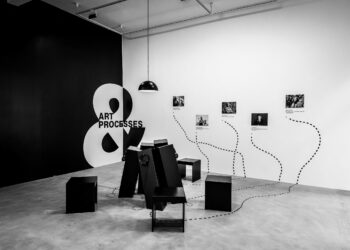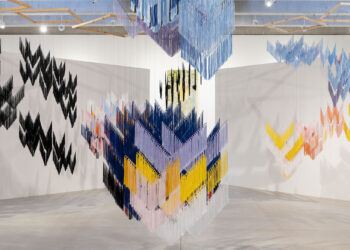Presented as a solo exhibition by Lizamore & Associates at this year’s FNB JoburgArtFair is the work of Mandy Coppes-Martin. Recognised for her use of natural materials like silk, hemp and handmade paper translated into portraits and organisms found in nature, the body of work presented by Coppes-Martin’s is inspired by what she sees as the new age war between man and nature.
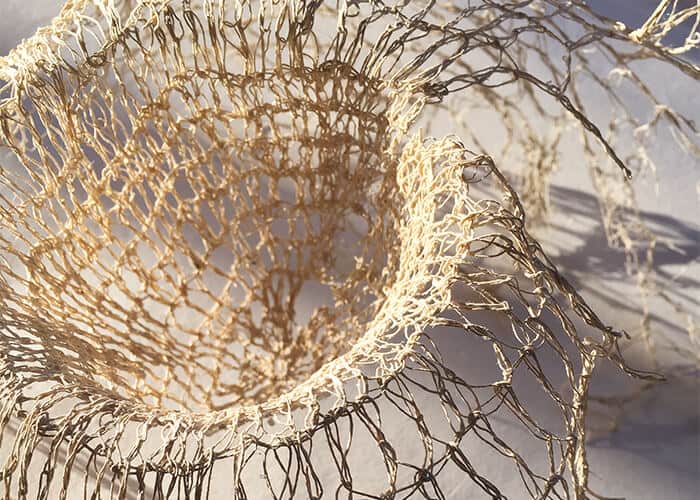 Mandy Coppes-Martin, close-up view of installation to be exhibited at JAF, 2016. Hand knitted paper thread and hemp pulp. All images courtesy of the artist and Lizamore & Associates.
Mandy Coppes-Martin, close-up view of installation to be exhibited at JAF, 2016. Hand knitted paper thread and hemp pulp. All images courtesy of the artist and Lizamore & Associates.
ART AFRICA: Your work deals with what is probably the most pressing issue facing humanity – our survival. Can you tell us more about the processes you use to create your work and how this helps to address the important issues you are highlighting?
Mandy Coppes-Martin: I am greatly informed by the physical world and use mostly natural materials as a medium of expression. Natural fibres are malleable and transform into objects or drawings but they are also steeped in history and significance. I am interested in the physical connection to the material, the subject matter I work with and the theoretical association with the image and the material.
I use paper, thread, raw silk fibres and the traditional art of crocheting and knitting to make forms and shapes that depict a life once lived or an action once taken, such as the growth rings in a tree trunk or the unraveling of a silk worm cocoon. With these materials I try to retrace the past and in turn leave behind a skeleton of memories. The thin airy nature of the silk and paper portrays a feeling of fragility and beauty and yet gives a sense of impermanence and decay.
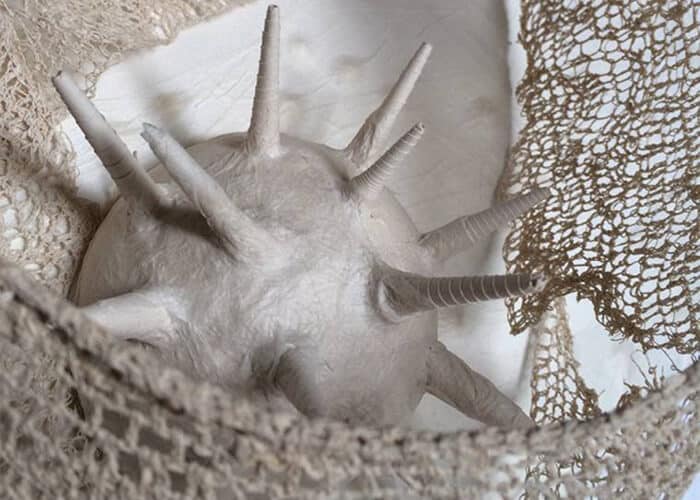 Mandy Coppes-Martin, close-up view of installation to be exhibited at JAF, 2016. Hand knitted paper thread and hemp pulp.
Mandy Coppes-Martin, close-up view of installation to be exhibited at JAF, 2016. Hand knitted paper thread and hemp pulp.
There is a lot of symbolism in your work, both in subject matter – like the recurring use of the tree – and the materials you use, like silk, hemp and paper. What drew you to these materials and what effect did it have on your use of symbolism?
The very nature of the silk worm is, in many ways, similar to the human condition. Silk has been a revered fibre for centuries and has been smuggled, kept a secret and stolen. It is spun from an insect that purges and feeds for days in order to produce something that will protect itself only for a few days so that it can be allowed to grow into something that has no eyes nor mouth and that can neither drink nor eat. It continues to mate, lay eggs and pass away. What is left is something beautiful and rather useless in terms of its natural surroundings. The act of unraveling a silkworm cocoon feels like a connection to the past and the present through the re-spinning of a new story and the unfolding of a life cycle. The life cycle is ever present in many of my works with many of them speaking about birth, decay and the trace that is left behind.
Paper and paper thread closely represent the life rings found in the cross section of a tree trunk. I began working with tree rings several years ago and find them to be the most beautiful arrangements of natural life. Tree rings tell a story of events through mark making. They offer glimpses into the lost or forgotten stories of our natural environment and represent bits of history that are physically present, yet without narrative.
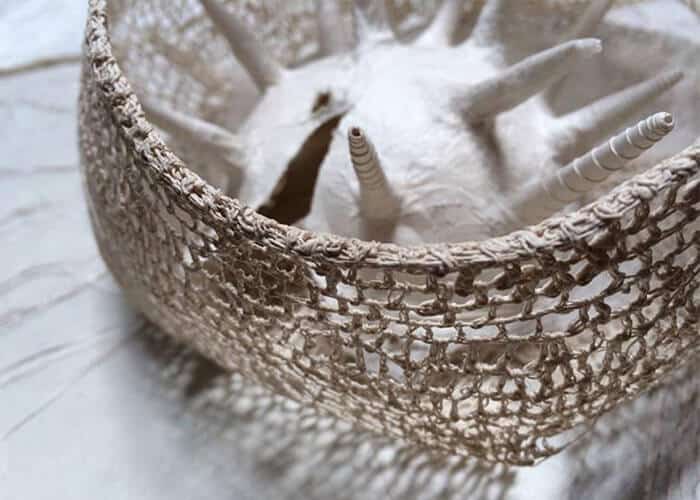 Mandy Coppes-Martin, close-up view of installation to be exhibited at JAF, 2016. Hand knitted paper thread and hemp pulp.
Mandy Coppes-Martin, close-up view of installation to be exhibited at JAF, 2016. Hand knitted paper thread and hemp pulp.
Your fascination with materials and processes has led you to produce highly intricate works that challenging the viewer to reflect on their connection to the natural environment and the fragility of it. What have some of the responses to your work been like?
In many instances people have responded with surprise when they see the matted fibres and realise that the works are made from silk or paper thread. I find that most people are surprised at the fact that a natural material has been used to create something so delicate and yet so strong and durable. I enjoy this element of surprise and I think it’s the thin or impermanent feeling of the art work that make it seem almost impossible. There seems to be a connection with the natural world when a person can see the physical interconnecting of the fibres and the unravelling of the silk to make a drawing.
You have said that ‘There are certain realities in [your] work and in the world around us, and that is that nothing lasts, nothing is finished and nothing is perfect.’ How do you apply this thinking to your own work process?
I am interested in working with notions of memory or traces of things that have happened or things that just exist in the cycle of life. These life forms that exist in the natural world are imperfect, yet intertwined with our very existence. There exists a reciprocal relationship between mankind and the environment, that is fragile, potentially impermanent and which faces obliteration through the mark of man. It is these life forms that are necessary for our survival and reworking and remaking some of these life giving organisms creates a sense of completion.

